|
|||
|
|||
| This short article provides a small sample of those 19th century works of art that HR drew inspiration from when decorating their beer steins, works by von Kaulbach, von Defregger, Grutzner, Hoffmann, Schweninger and others. | |||
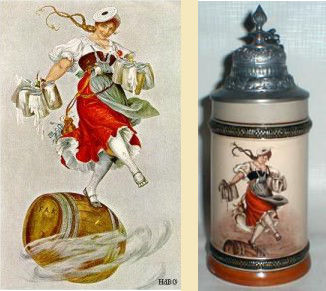 Friederich A. von Kaulbach, 1850-1920: Friederich von Kaulbach was a portrait painter who specialized in painting beautiful women. Colleta Moritz (1859-1920) posed as the model for the "Schützenlisl" (the target Lisl), and in the late 1880s this image became synonymous with Munich. Von Kaulbach painted a "Schützenlisl" on a tavern sign for a tavern of the same name. The tavern was participating (sponsoring competitors) in the 7th German National Shooting Competition in July of 1881 at the Theresien Meadow. The sign turned Lisl into one of the main attractions of the festival. |
|||
Franz Defregger, 1835-1921: 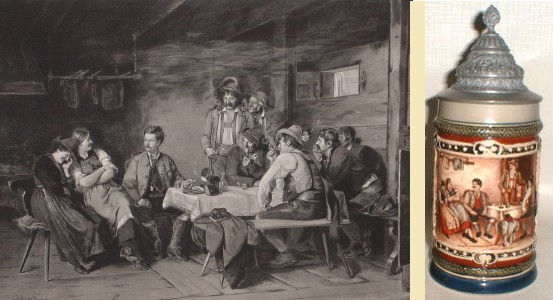 |
|||
| Defregger
was born in 1835 at Stronach, a farm belonging to the parish of Dolsach
in the Pusterthal. His teacher saw he had a talent for painting,
persuaded him to go to Munich, and secured a place for him in the
studio of Piloty. Defregger specialized in the daily life of those
around him. His paintings are usually well populated. The City Swell is
dated 1883. |
|||
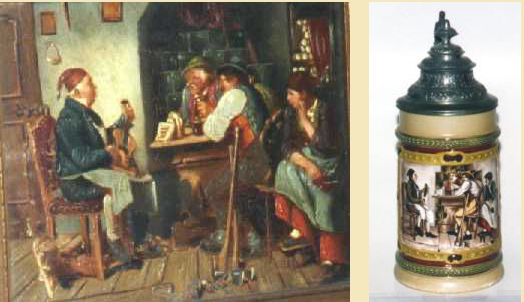 H. Hoffmann: Not much is known about H. Hoffmann, not even what the "H." stands for. The only information I can find, is that he was active in the late 19th century. |
|||
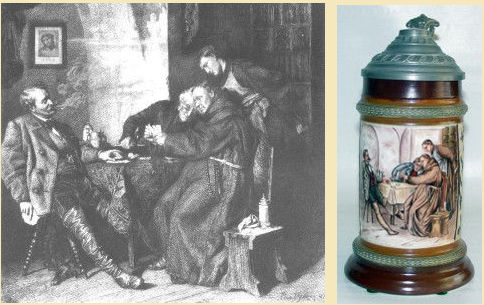 Eduard
Grützner, 1846-1925: Eduard
Grützner, 1846-1925: Grützner was born at Gross Carlowitz, Silesia, May 26 1846. He was a pupil of the Munich Academy and of Piloty. He devoted himself to humorous genre, and gained great success with his scenes from Shakespeare. Later the amusing sides of monastic life became his primary theme. "Hard Luck" above was done in 1873. He did a series titled "Kloister Kitchens" between 1884 and 1888. 1901 is the reported date on "Sweet Revenge." Grützner's paintings usually portray small groups of 2 to 5 people. |
|||
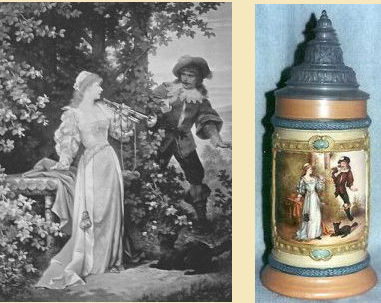 Carl Schweninger Jr., 1854-1903: "The Surprise" is one of 10 lithographs produced in 1887 and 1888 to illustrate "Der Trompeter of Säkkingen" written in 1855 by Jos.Victor von Scheffel.This poem has been a favorite source of decorations on steins, and a wide variety of scenes are well known. |
|||
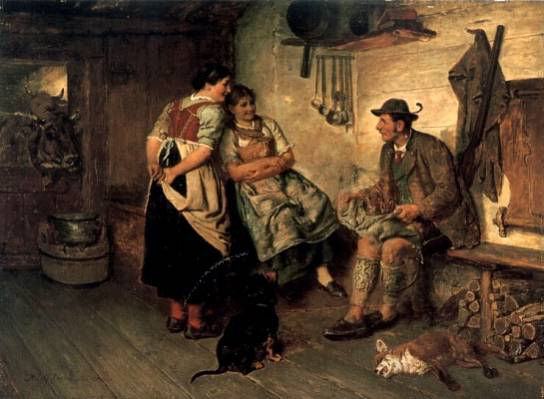 Adolf Eberle, 1843-1914: Eberle specialized in scenes with hunters and their catch which is displayed either on a table, or on the floor at the hunter's feet. The scenes are often of a hunter and 2 to 4 young women, to whom he is probably boasting. While I have seen Eberle's work on other steins, so far I haven't been able to match up an Eberle painting to an HR stein. |
|||
|
|
|||
